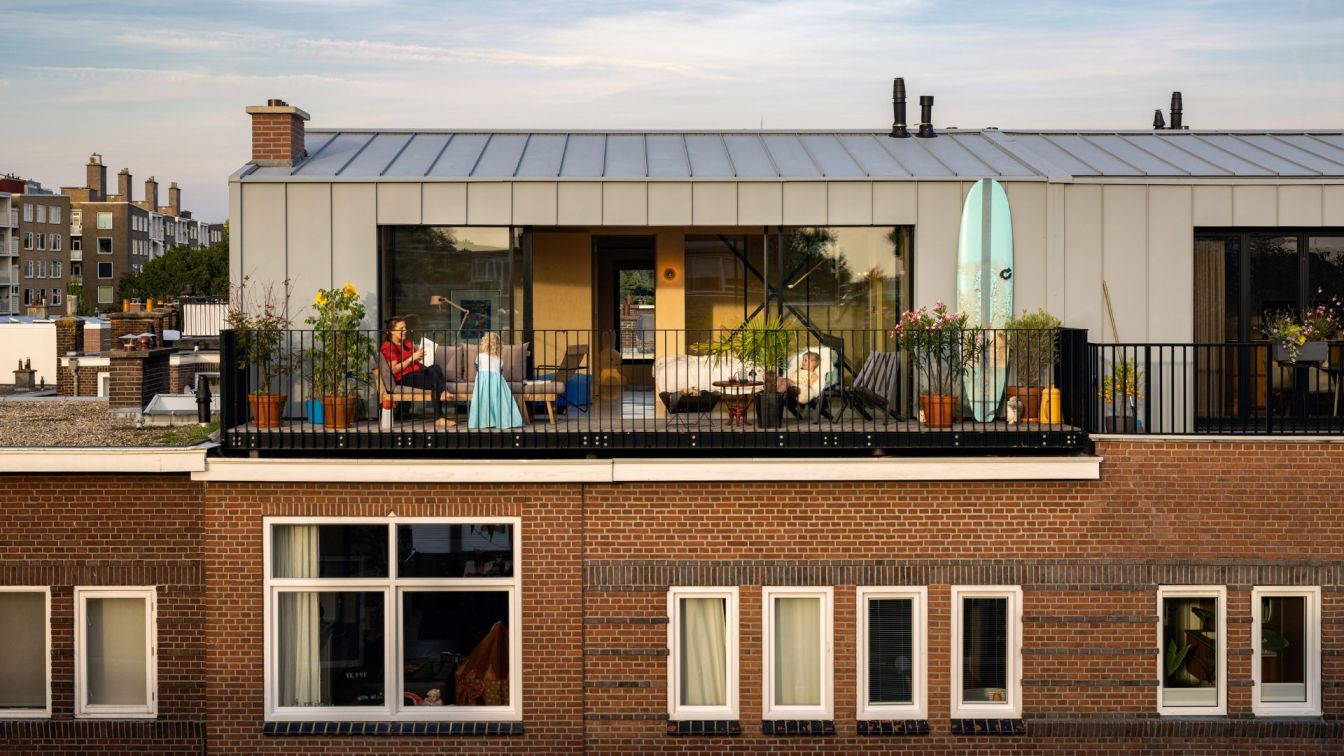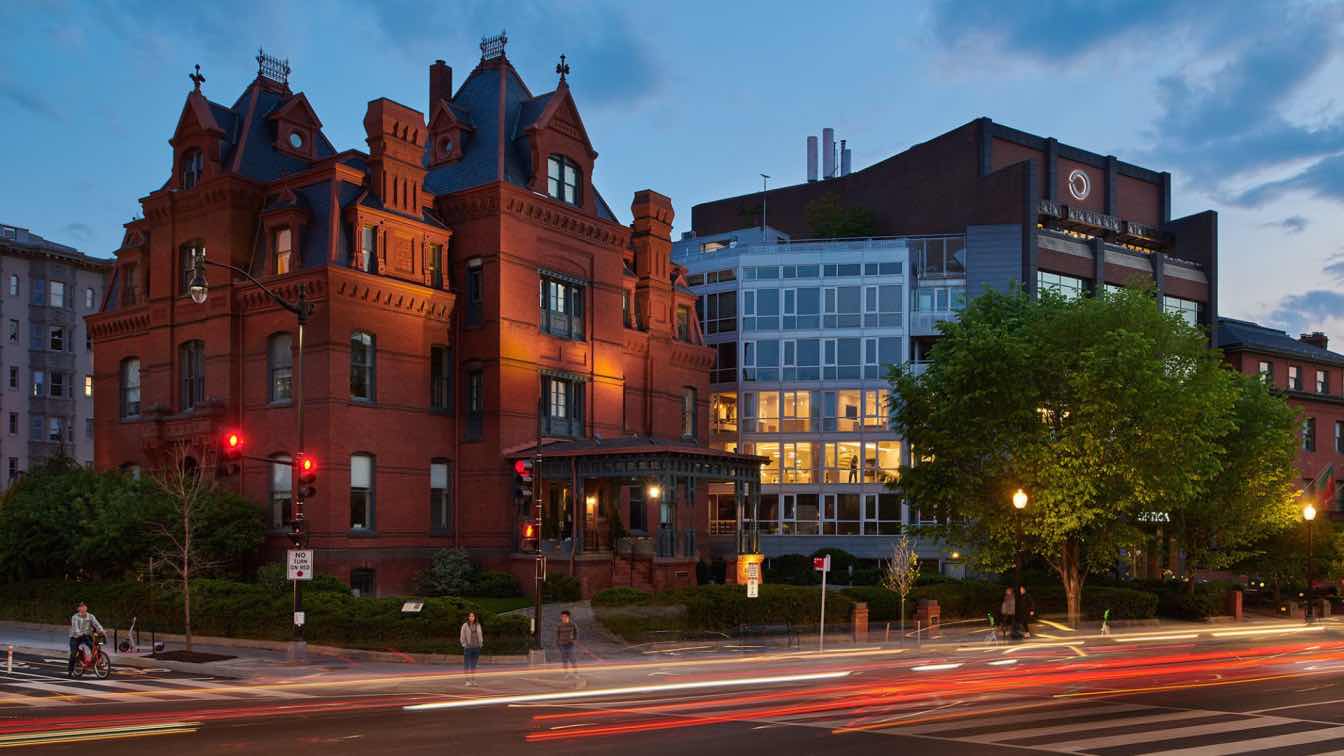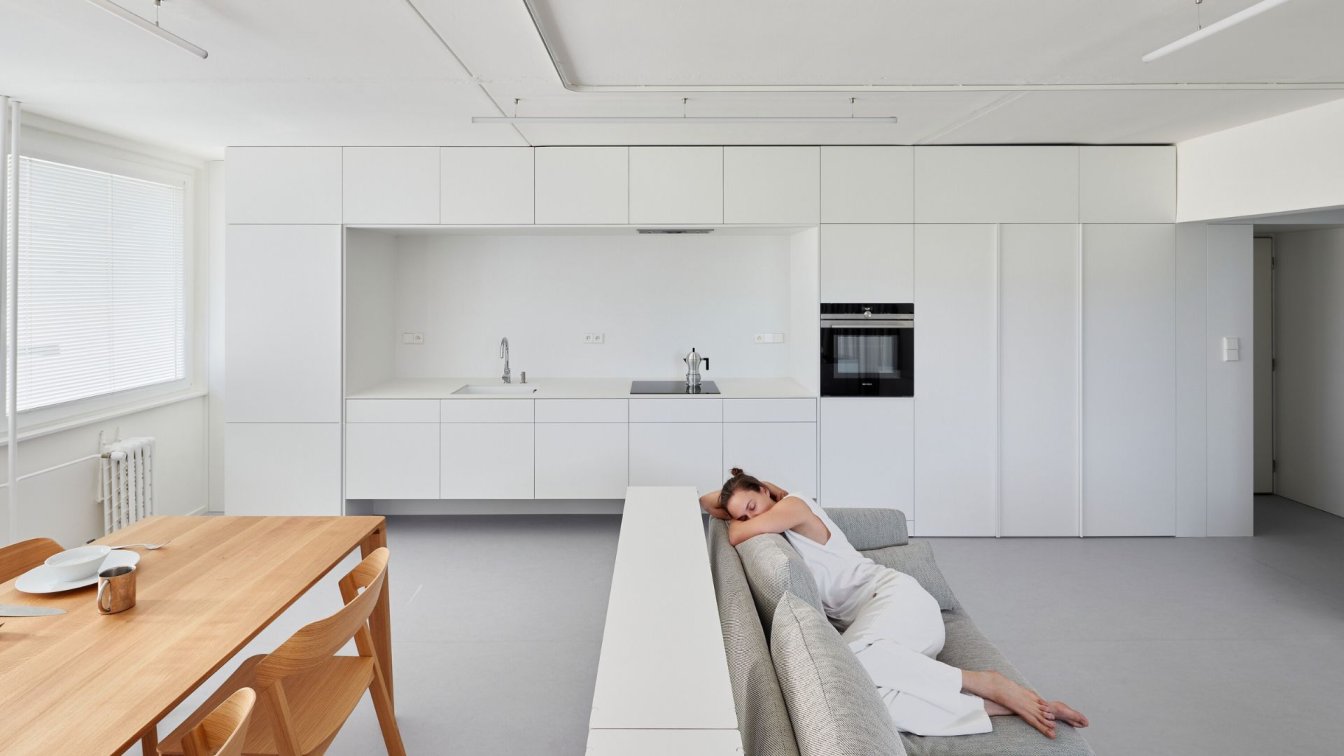In the Bomenbuurt; a 1930’s neighbourhood in The Hague located between the centre of The Hague and the beach, the founder of Bloot Architecture designed and helped build a roof extension for his family on top of their existing apartment.
The urban fabric of the Bomenbuurt consists of 3-layer building blocks that are built close to each other, so that adding an extra layer un top of the existing buildings has a lot of impact on the rest of the immediate surroundings. As a volume, the roof structure is subtly integrated into the context, but its form language and materialization contrast with the brick architecture of the 1930’s district.
The municipality of The Hague encourages topping up the existing building mass, in order to keep families in the neighbourhood who would otherwise have had to move to find more space. One of the municipality's principles is to let the first roof extension for a building block be the guiding principle for the rest of the block. The proposal to the municipality therefore also includes a proposal for the entire block. The House on a House project respects the existing brick architecture by leaving it untouched and creating a new world on top of the 3-storey apartment blocks.
The front and rear of the roof extension are set back in relation to the existing buildings. This separates the structure from the existing architecture. The roof structure has the archetypal shape of a house. This creates a strong contrast with the existing straight roofs. The pitched roof also ensures that the gutter height is lower than with a regular roof extension. Together with the setback, this minimizes the impact of the new build on its surroundings in terms of shadows and privacy.

The existing 1930s construction is sensitive to noise, so it was decided to realize the bedrooms in the roof extension and to place the construction of the extension in its entirety, including the floor, on top of the existing building. This new 'floating' construction and the large span covering the glass sliding doors made the use of a steel construction necessary. In the interior, a number of elements of this construction have been left visible. Each room has such a constructive accent and has it in its own colour.
The roof extension offers space for 3 bedrooms. The two smaller bedrooms are for the children and the master bedroom is for the whole family. In addition to a sleeping area for the parents, this room also has a sitting area, a toilet and a pantry. The pantry ensures that the outdoor space can be used as fully as possible. The entire long side of the master bedroom consists of glass sliding doors. Because the new construction lies on top of the existing construction, there is room to conceal the window frames flush. As a result, inside and outside flow seamlessly into each other. The steel fencing that runs vertically behind the wooden decking emphasises this feeling of infinity.
To prevent the master bedroom from heating up by the sun, 6 sliding screens have been incorporated in the design. These can be slid per 3 screens into pockets left and right in the front wall. This gives you the choice to enjoy the full view or use the privacy of the screens. You can see through the screens, but you can't do that from the outside in and the sun can't get in either. The sliding screens are made of a steel frame and filled in with untreated Western Red Cedar wood. The warmth of the wood and the playfulness of the changing positions of the sliding screens give the design an extra layer.

With a roof extension on top of this kind of architecture it is necessary to continue the existing chimneys to the new roof. The offsets that the chimneys give in the floor plan have been used in this design to program the walls with cupboard space and in the small bedroom the chimney playfully divides the room into a sleeping and living area.
The infill of the minimal steel skeleton of the roof extension is entirely done with timber framing and flax insulation. All interior walls and ceilings are made of birch plywood. The birch plywood doors are framed seamlessly in the walls, or they slide alongside the toilet and pantry. The light grey even colour of the resin floor forms a fresh and sleek contrast to the warm wooden interior.
The space that became available on the existing 2nd floor has been included in this renovation and has been converted into a bathroom. The birch plywood walls continue via the stairs into the bathroom. The existing ceiling has been taking away and the old beams are made visible. The part of the ceiling that is not covered by the extension is insulated with cork. Concrete panels and pale Blue hexagon tiles complete the warm pallet of this bathroom.
The outside of the roof extension is covered with steel seam cladding. Both the roof and the walls have this cladding, so that the building can be read as an unambiguous volume. This makes it stronger in its contrast to the brick underworld. The steel seam cladding has a certain degree of reflection, so that the building colours with the light of the day. In addition to the fact that the roof extension forms a contrast, it is also a recognizable addition as it is reminiscent of the classic Parisian roofs, which often consist of zinc roofs placed as a vertical ending on top of a stone structure.
























